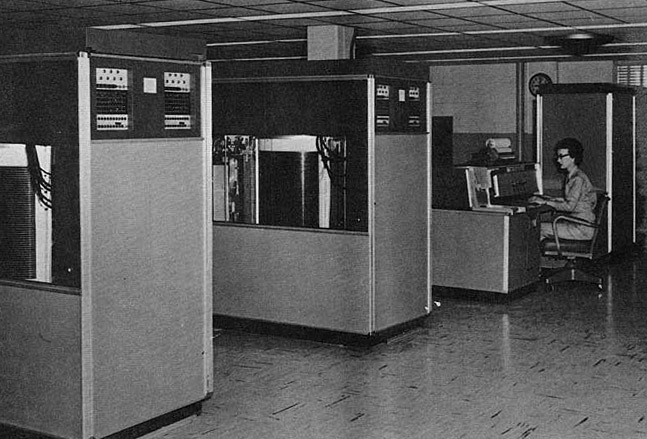The IBM 350 disk storage unit, the first disk drive, was announced by IBM as a component of the IBM 305 RAMAC computer system on September 13, 1956.Simultaneously a very similar product, the "IBM 355 Random Access Memory" was announced for the IBM 650 computer system. RAMAC stood for "Random Access Method of Accounting and Control."
Its design was motivated by the need for real time accounting in business. The 350 stored 5 million 7-bit (6-bits plus 1 odd parity bit) characters (about 4.4 megabytes). It had fifty 24-inch (610 mm) diameter disks with 100 recording surfaces. Each surface had 100 tracks. The disks spun at 1200 RPM. Data transfer rate was 8,800 characters per second. An access mechanism moved a pair of heads up and down to select a disk pair (one down surface and one up surface) and in and out to select a recording track of a surface pair. Several improved models were added in the 1950s. The IBM RAMAC 305 system with 350 disk storage leased for $3,200 per month. The 350 was officially withdrawn in 1969
The 350's cabinet was 60 inches (152 cm) long, 68 inches (172 cm) high and 29 inches (74 cm) deep. IBM had a strict rule that all its products must pass through a standard 29.5 inch (75 cm) doorway. Since the 350's platters were mounted horizontally, this rule presumably dictated the maximum diameter of the disks.
Currie Munce, research vice president for Hitachi Global Storage Technologies (which has acquired IBM's storage business), stated in a Wall Street Journal interview that the RAMAC unit weighed over a ton, had to be moved around with forklifts, and was delivered via large cargo airplanes. According to Munce, the storage capacity of the drive could have been increased beyond five megabytes, but IBM's marketing department at that time was against a larger capacity drive, because they didn't know how to sell a product with more storage.
In 2002, the Magnetic Disk Heritage Center began restoration of an IBM 350 RAMAC in collaboration with Santa Clara University. In 2005, the RAMAC restoration project relocated to the Computer History Museum where efforts to restore the drive for public display continue.





No comments:
Post a Comment